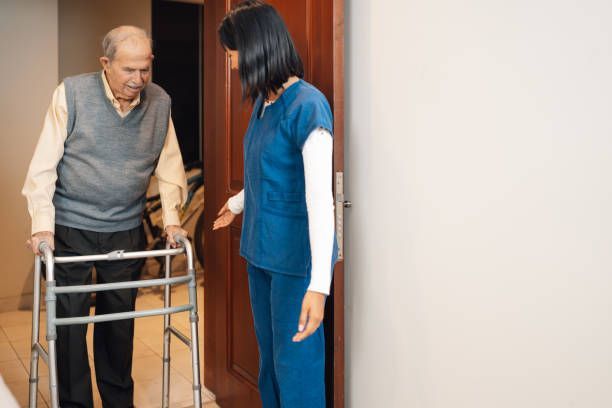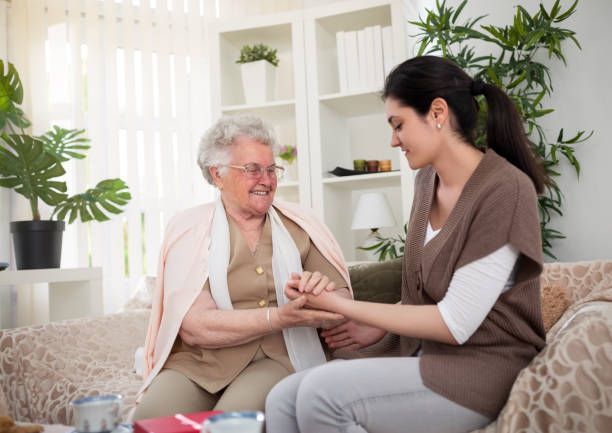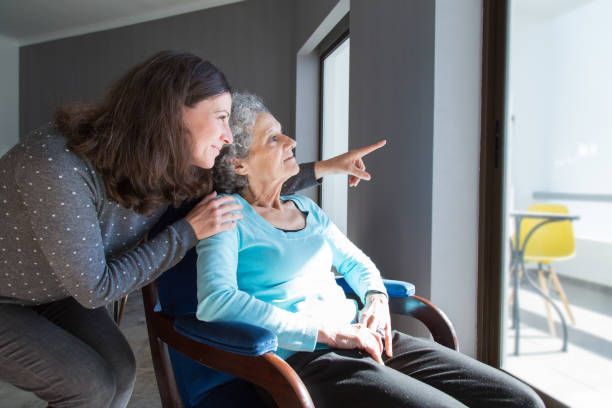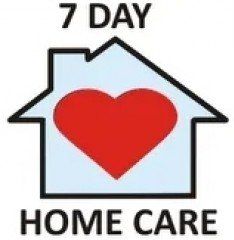Telehealth: A Transformative Approach to Healthcare
Telehealth: A Transformative Approach to Healthcare
At 7 Day Home Care, we recognize that the integration of telehealth and in-home care services plays a pivotal role in promoting elderly independence and well-being within the comfort of their own homes. Telehealth allows seniors to access medical consultations, monitor chronic conditions, and receive timely healthcare advice without the need for frequent visits to the doctor’s office, thereby reducing the physical and emotional strain associated with travel. Coupled with our personalized in-home care services, which provide assistance with daily activities, medication management, and companionship, we create a comprehensive support system that enhances the quality of life for elderly individuals. This dual approach ensures that seniors maintain a higher degree of autonomy, as they can continue to live in familiar surroundings while receiving the necessary medical and personal care. Furthermore, it offers peace of mind to family members, knowing that their loved ones have access to professional healthcare and support at all times. By combining cutting-edge telehealth technology with compassionate in-home care, 7 Day Home Care empowers elderly individuals to lead healthier, more independent lives.
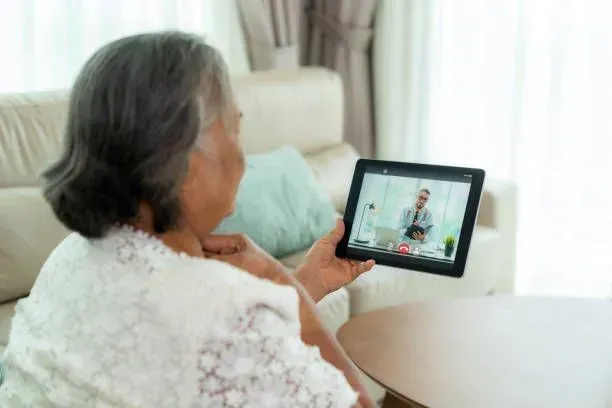
Telehealth and Home Care Services Promote Elderly Independence at Home
Telehealth has emerged as a game-changer in the healthcare industry, leveraging technology to bridge the gap between patients and medical professionals. At 7 Day Home Care, a leading provider of in-home care services in New York City, Brooklyn, Queens, Nassau County, and Suffolk County, we recognize the transformative power of telehealth. In this article, we will explore the history and evolution of telehealth, its comprehensive benefits, and the specific groups of patients who can benefit the most from this revolutionary approach to healthcare.
A Brief History of Telehealth
Telehealth, the practice of using digital communication technologies to deliver healthcare services remotely, has a rich history that dates back to the early 20th century. The concept began with the use of telephone consultations, which provided a means for patients in remote or rural areas to receive medical advice without the need for travel. One of the earliest documented uses of telehealth was in the 1920s when radiology images were transmitted via telephone between hospitals. This innovation paved the way for more advanced telecommunication methods. By the 1950s and 1960s, with the advent of television, the idea of delivering healthcare through video communications started to take shape. The Nebraska Psychiatric Institute, for instance, used closed-circuit television to provide psychiatric consultations and education to medical students and patients in different locations.
The evolution of telehealth accelerated dramatically with the rise of the internet in the late 20th century. In the 1990s, the U.S. Department of Defense developed telemedicine programs to provide remote care to military personnel, which highlighted the practical benefits and potential of telehealth technologies. With the advancement of internet bandwidth and the proliferation of smartphones and mobile devices in the 2000s, telehealth expanded further into mainstream healthcare. Video conferencing, mobile health apps, and wearable health monitoring devices became increasingly popular. The COVID-19 pandemic in 2020 acted as a significant catalyst, driving widespread adoption and regulatory support for telehealth services. This period saw a dramatic increase in telehealth usage, as healthcare providers sought to minimize in-person visits to reduce the virus's spread. Today, telehealth is an integral part of the healthcare system, offering accessible, efficient, and flexible healthcare delivery worldwide.
The Pros and Cons of Telehealth
Pros of Telehealth:
- Enhanced Access for Various Patient Groups
Telehealth offers a lifeline to numerous patient groups who face barriers to accessing traditional healthcare services. These groups include:
a. Patients with Transportation Issues: Telehealth eliminates the need for travel, enabling patients with transportation challenges to receive medical consultations from the comfort of their homes.
b. Individuals with Mobility Issues: Patients with limited mobility can avoid the physical strain of visiting a healthcare facility by opting for telehealth consultations.
c. Immunocompromised Individuals: Telehealth provides a safer alternative for immunocompromised patients, reducing their exposure to infectious diseases in healthcare settings.
d. Shut-Ins and Homebound Patients: Telehealth empowers individuals who are homebound or have limited mobility to receive timely and necessary medical care without leaving their homes.
e. Rural Area Residents: Patients residing in rural and remote areas can access specialized medical services and expertise through telehealth, overcoming geographic barriers.
f. Mental Health Patients: Telehealth offers confidential and convenient access to mental health services, breaking down barriers associated with stigma and travel.
The Journal of Medical Internet Research reports that telehealth has a positive impact on patient access to healthcare, particularly for rural and underserved populations.
2. Cost Savings for Patients and Healthcare Providers
Telehealth reduces the overall cost of healthcare, benefiting both patients and healthcare providers. Patients save on travel expenses, parking fees, and potential time off from work, while healthcare providers can optimize resources and allocate their time more efficiently. The American Hospital Association highlights that telehealth has the potential to save $19 million annually in healthcare costs.
3. Convenience and Time Efficiency
Telehealth provides unparalleled convenience for patients, enabling them to schedule appointments at their convenience and avoid long waiting times in healthcare facilities. A survey by the Deloitte Center for Health Solutions found that 76% of patients consider telehealth more convenient than traditional in-person visits.
Cons of Telehealth:
- Technology Barriers
The successful implementation of telehealth relies on access to reliable internet and technology. Patients without access to such resources may face challenges in participating in telehealth consultations. The Pew Research Center reports that 22% of adults in the United States do not own a smartphone, limiting their access to telehealth services.
2. Limited Physical Examination
While telehealth is effective for many medical consultations, certain scenarios may require in-person visits for a thorough physical examination and specific medical procedures. The American College of Physicians advises that telehealth should complement, not replace, in-person care to ensure comprehensive patient evaluation.
Telehealth has revolutionized healthcare, offering unprecedented benefits to a diverse range of patient groups. By breaking down barriers to access and improving convenience, telehealth has become an invaluable tool for providing quality medical care remotely. As a provider of in-home care services, 7 Day Home Care embraces telehealth as part of our commitment to delivering comprehensive and innovative care solutions, and can assist our clients in New York City, Brooklyn, Queens, Nassau County, and Suffolk County with their telehealth appointments.
To learn more about our in-home care services visit 7 Day Home Care or call 516-408-0034 today. We are dedicated to ensuring the well-being and comfort of our clients through cutting-edge healthcare solutions. 7 Day Home Care is licensed by the New York State Department of Health to provide home care services, including meal preparation in Manhattan, Queens, Brooklyn, Nassau County, and Suffolk County, New York.
Brian Callahan
7 Day Home Care


